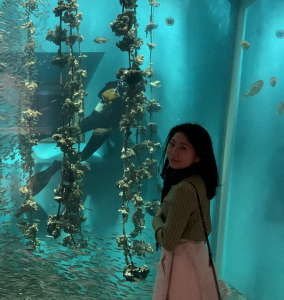100 Stories
Iroha Village – a little gem hidden in an industrial forest
Last week, I found out about a place called Iroha Village, a quiet area hidden by a lovely green shrubbery at the corner of a road I often took to drive to the big mall in Hatsukaichi. I had always wondered what this forest-y place was all about, and although it took me a while before I gathered up the courage to visit, when I finally did, it was one of nicest, most serene experiences I’d had, in the middle of an industrial strip in Hiroshima.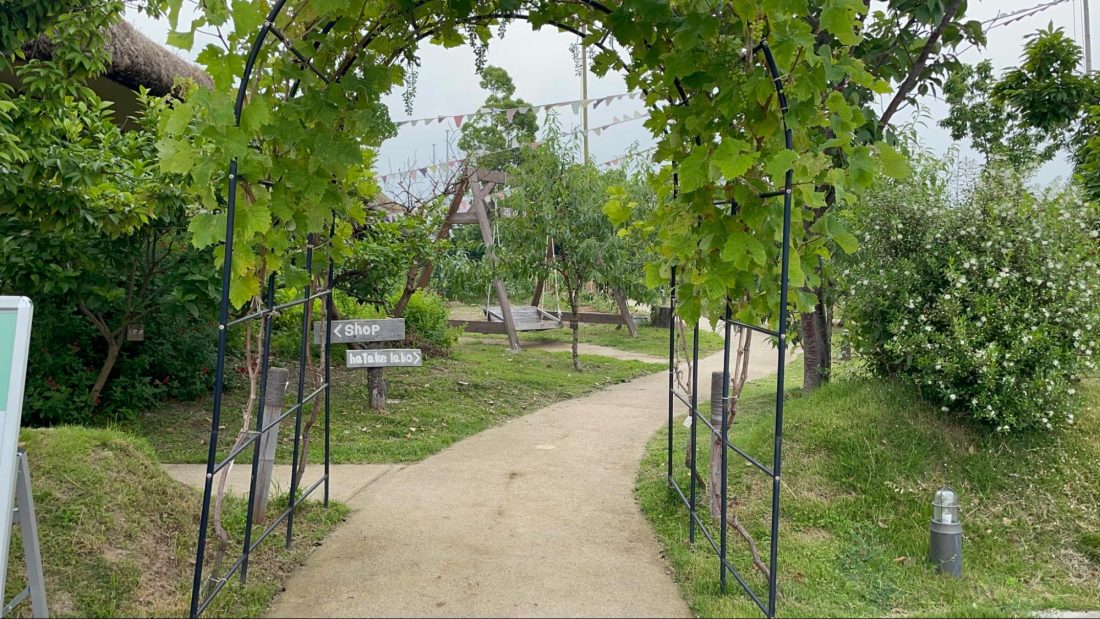
When I first parked my car and got out, I was greeted by a beautiful arch wrapped around in green grapes, and I was utterly surprised when I got a glimpse of what it was like inside. Inside was a short garden strip with different plants growing from the ground, with trees of different fruits decorating the entire back garden. Next to it was a wooden brown building with an unusual herb garden on the roof. The entire scenery literally made me stop in my tracks and say “Oh wow,” – I hadn’t even imagined that it would be this beautiful and scenic, I mean, I had just driven down from a busy road FULL of cars.
And it wasn’t just that it was beautiful, when I turned around, I realized I was completely isolated from the large roads right next to the garden, and couldn’t even see the large factories and towering company buildings – their presence had just completely disappeared and I had forgotten all about them.
What is Iroha Village?
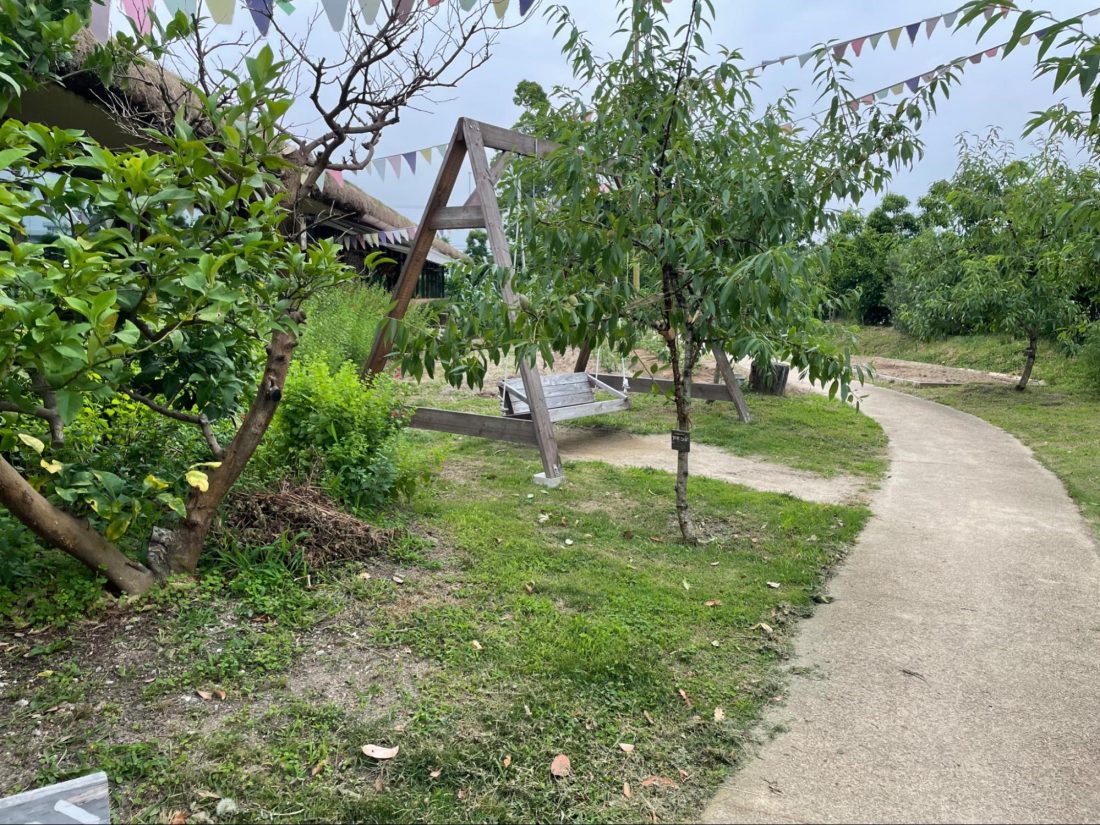
Iroha Village is actually the forefront for Fujiya’s (藤い屋)Momoji Manju factory; behind this beautiful cottage, there is an enormous factory making Momiji Manju treats, which will then be shipped all across Hiroshima and the country.
If you’re unaware of what Momiji Manju treats are, they are wheat based treats in the shape of the famous autumn leaves in Japan called Momiji, with a rich red bean pastry inside (photo below). Nowadays, they also have quite a few variations: instead of red beans, they also have Momiji Manju with chocolate, cheese, green tea, and more inside… My personal favorite is the cheese Momiji Manju that’s been deep fried and I have it every time I visit Miyajima.
You can find them here: https://momijido.com/agemomi/
Iroha Village was created when Fujiya decided that instead of just making Momiji Manju treats, they wanted to experiment in growing their own food and ingredients, as well as try figuring out other ways to use wheat and red beans – their two main ingredients for Momiji Manju. Their ambition stemmed from an event that happened a few years ago when Hokkaido, where they get most of their red bean ingredients, suffered from poor crops. Many Momiji Manju factories had to scramble across the country to gather enough red beans to keep up with production. It was then that Fujiya decided that they would try and grow red beans here in Hiroshima to help with production – thus marking the start of Iroha Village. However, instead of just trying to make soy beans, they also decided to try and grow wheat, various fruits, corn, almonds, and much much more.
Yes, you read right! They also have almond trees. I think it was the first time I’d ever seen an almond tree in my life. 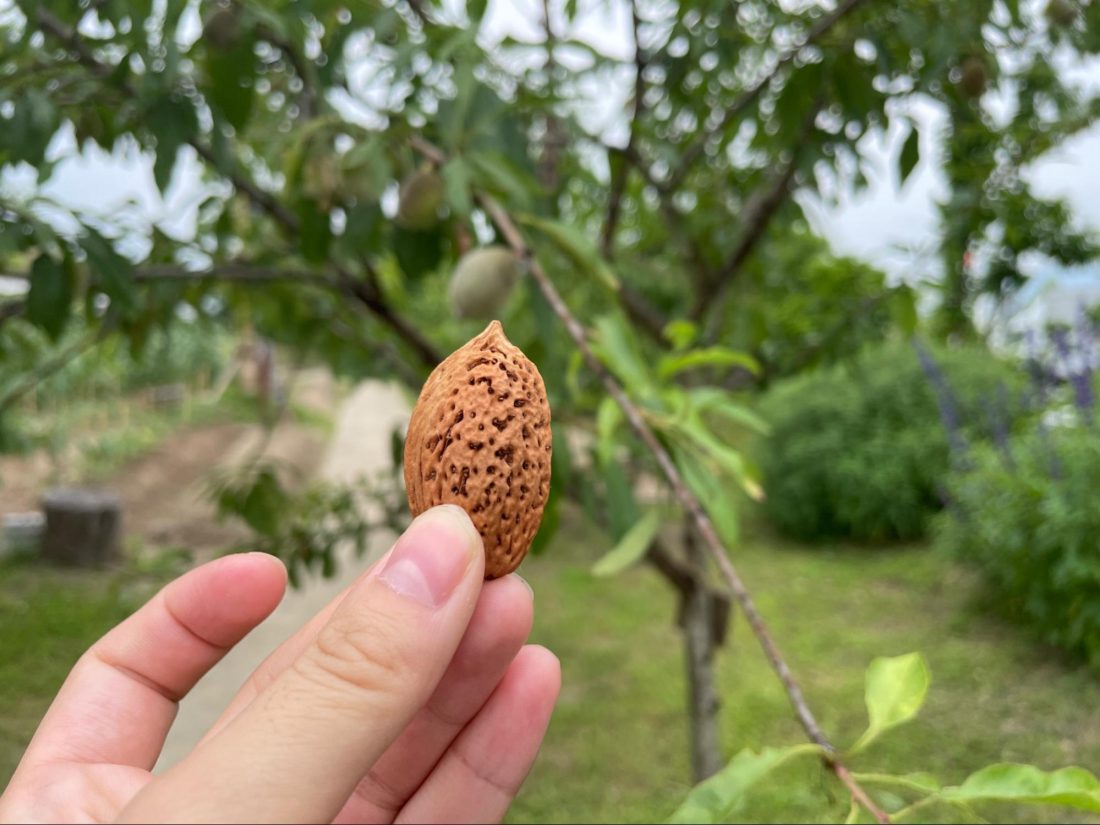
I learnt all the interesting facts about Iroha Village and the making of Momiji Manju through their factory tour, which is held every Saturday, two times a day for around thirty minutes. I’m not sure many people are aware of this tour, and so I was lucky enough to be the only participant and had a great opportunity asking all of my curious questions – to which my lovely guide from the PR department replied lengthily and in much detail. I learnt some fascinating facts – for example, Fujiya makes their red bean paste at Miyajima because when they tried to make the same pastry near the factory, they couldn’t recreate the taste! Apparently, the water is fresher on the island and that really has a big impact on the taste of the anko (red bean pastry) – thus even today, the red bean pastry is made on the island before being delivered back to the factory. I also learnt about the people who taste the anko every day, to make sure that the anko taste is up to their standards. Apparently the same person has been doing the job for thirty years plus! I asked if they ever got bored of tasting the same thing every day, and he said that because the anko pastry is so good,she has never been bored and will never be bored of the taste! The tour only costs 200 yen per person, and you also get a freshly baked Momiji Manju treat as well.
Moment of Joy
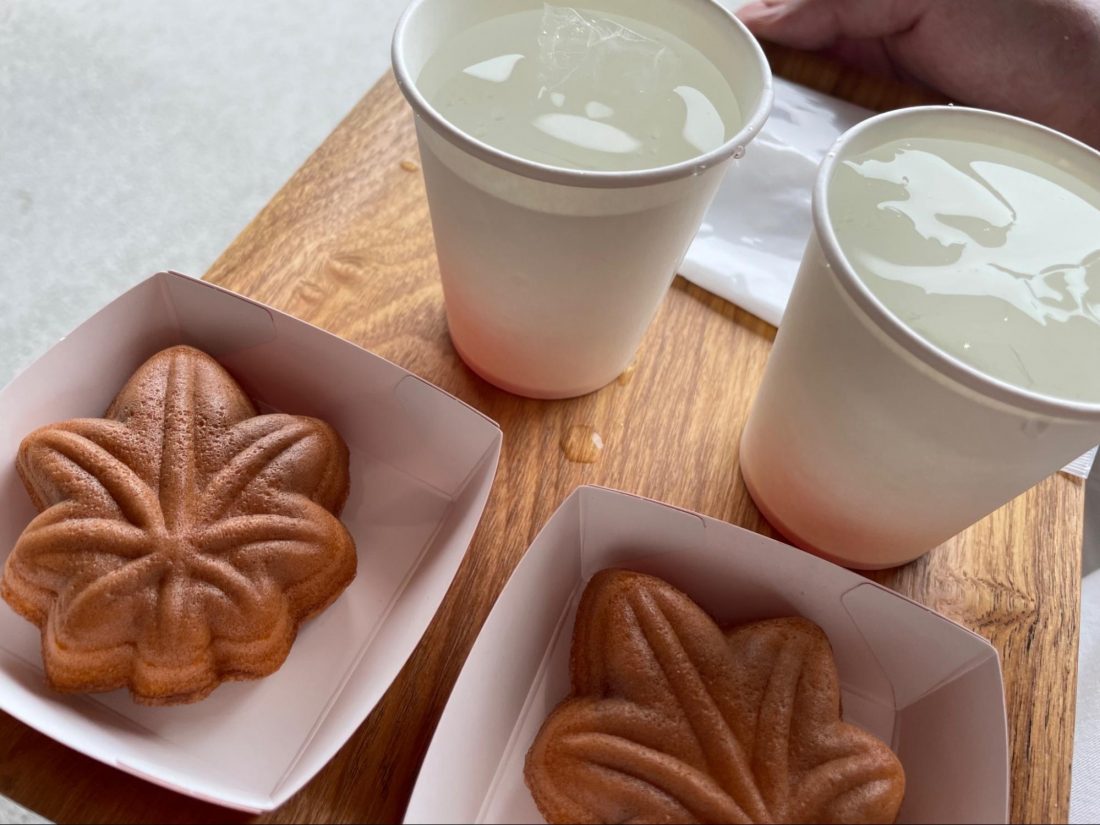
Having this Momiji Manju was actually my moment of joy of the day. It was so relaxing, sitting in the chair outside surrounded by greenery and good smells everywhere. And then, came the freshly hot Momiji Manju and I was so pleasantly surprised by how DIFFERENT it tasted from the actual dessert. I’m already a fan of Momiji Manju, but the freshly baked one was a different product entirely; the anko melted in my mouth and the fluffiness of the outside castella satisfied my senses with a wonderful, delicious taste. I’m craving for one as I write, right now.
You can also buy a freshly baked Momiji Manju without joining the tour but please be aware that they usually sell about by noon!
Fujiya & Iroha Village
Like many of the other Momoji Manju factories, Fujiya takes special care in their anko making. Personally, they’re one of my favorites as their red bean paste is just the right amount of sweetness. However, depending on your taste and likes, you might want to try other companies and find the perfect taste for you.
There are five sections to Iroha Village: the factory, the crops, the restaurant, the bakery and the patisserie. The reason why they added a bakery and a patisserie is because Fujiya also wanted to experiment with using their wheat and red beans for products other than Momiji Manju – thus why they also created the bakery, where they used wheat, and the patisserie, where they used the red beans for dessert. I came pretty close to buying some of their bread – the smell of their freshly baked dough followed me around the entire area and it was almost irresistible. I only decided not to go with it because I ended up stuffing myself at their cafe restaurant and I simply couldn’t think much about food afterwards.
Cafe Restaurant
The restaurant was also another appealing part about the place because the smell of their kitchen was absolutely amazing as well. They serve only two meals: hamburger steak and pork steak, so I decided to go with the pork steak and a lunch set. (You can also order take out instead of eating at the restaurant).
The meal came with a salad and a plate of bread ↓
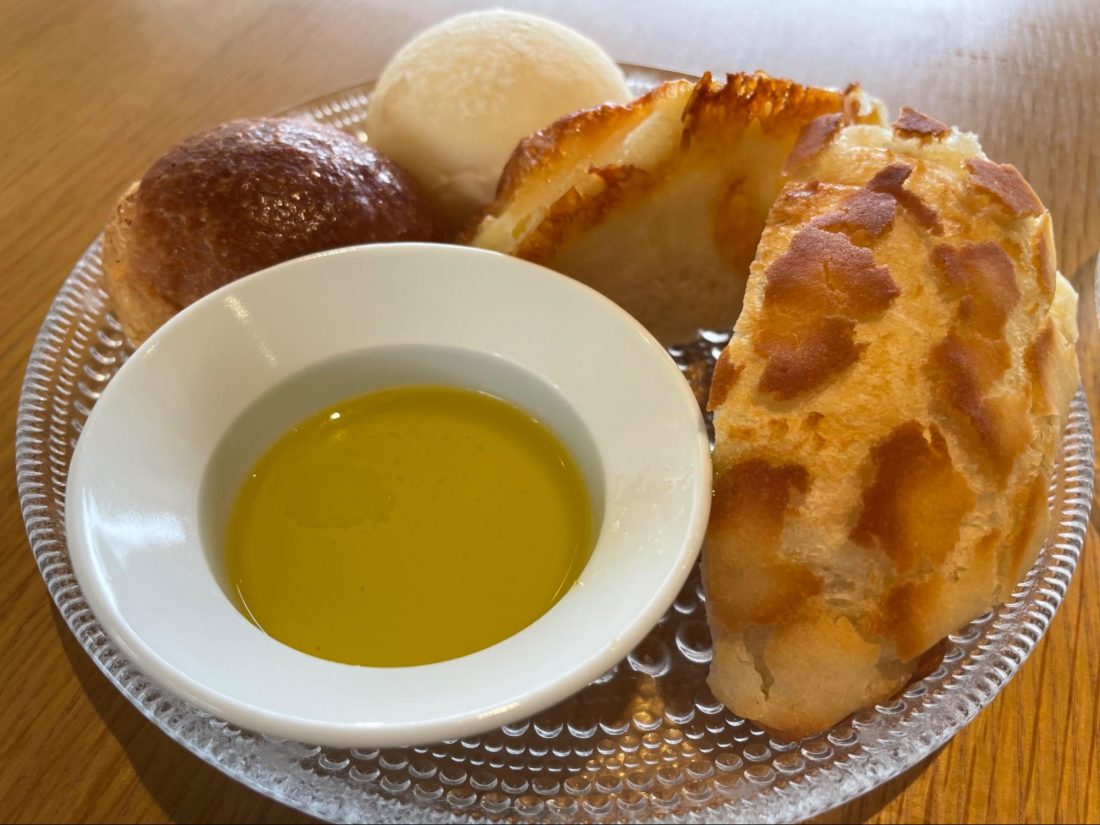

I was actually pretty surprised with the variety of bread they served and it was a wonderful way of being able to taste everything!
The main dish was also just as delicious, and I was pleasantly surprised at their steak sauce – which went incredibly well with the bread.
I was also looking forward to trying some of their dessert, but unfortunately, after a big meal, it was quite impossible to fill myself up with anything further and had to leave without trying anything else. It’s alright though – it just gives me another excuse to go again!
Who made Momiji Manju?
I actually also learnt this fact through the tour.
When the first prime minister of Japan Ito Hirofumi visited Miyajima and stayed at one of the oldest (and expensive) ryokans/hotels, he took a look at the hand of one of the female staff workers, compared it to the momiji tree leaves and said “how delicious would it be if it we just cooked your hand?” Now the joke is a little sketchy, especially when translated into English (I promise it sounds at least slightly better in Japanese) but the owner of the hotel heard the joke and immediately asked around to see if they could make this come true – thus marking the beginning of Momiji Manju treats. In addition to this cool story, they also didn’t patent their snacks so that other places could make more variations and carry on improving the dessert. I found this particular fact especially interesting and had to write it down here.
How to get there
Iroha Village is actually just ten minutes away from Yumetown Hatuskaichi, so it’s an easy stop if you’re on your way to some grocery shopping or clothes shopping. ON the other hand, it’s about ten minutes away from LECT as well. Unfortunately, the area is not very accessible by public transport and I recommend going by car (I think the closest station was a 15-18minute walk away). Probably not the best unless you’re planning on going on a hike.
There is actually also a home delivery service where you can order Momiji Manju, other snacks, bread and cakes!
You can check it out here: https://www.fujiiya.co.jp/inc/images/homedelivery/homedelivery_menu.pdf
However I would recommend actually visiting the place as it is genuinely a calming and pleasant experience – 10/10 would recommend a quick trip on a weekend!

